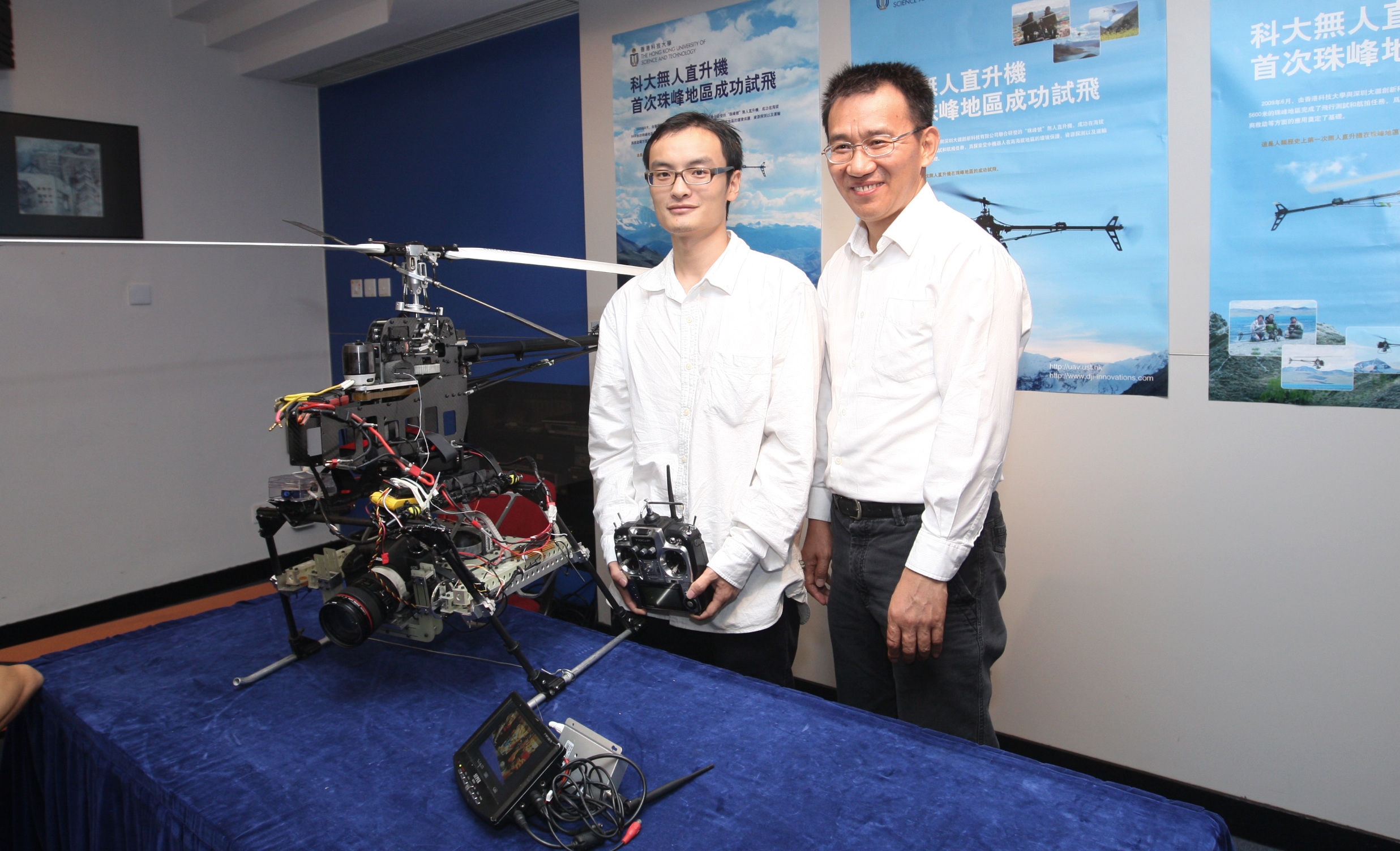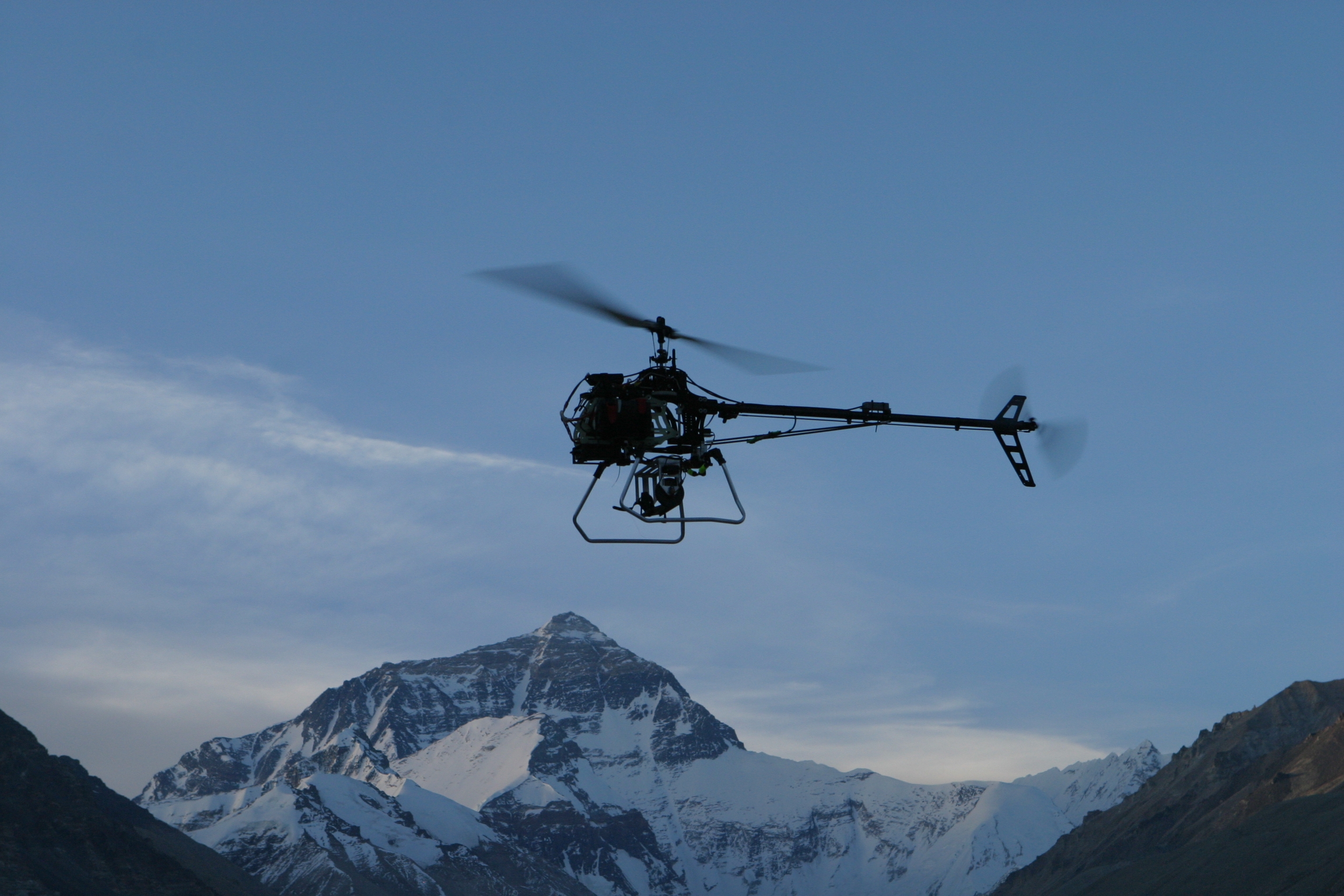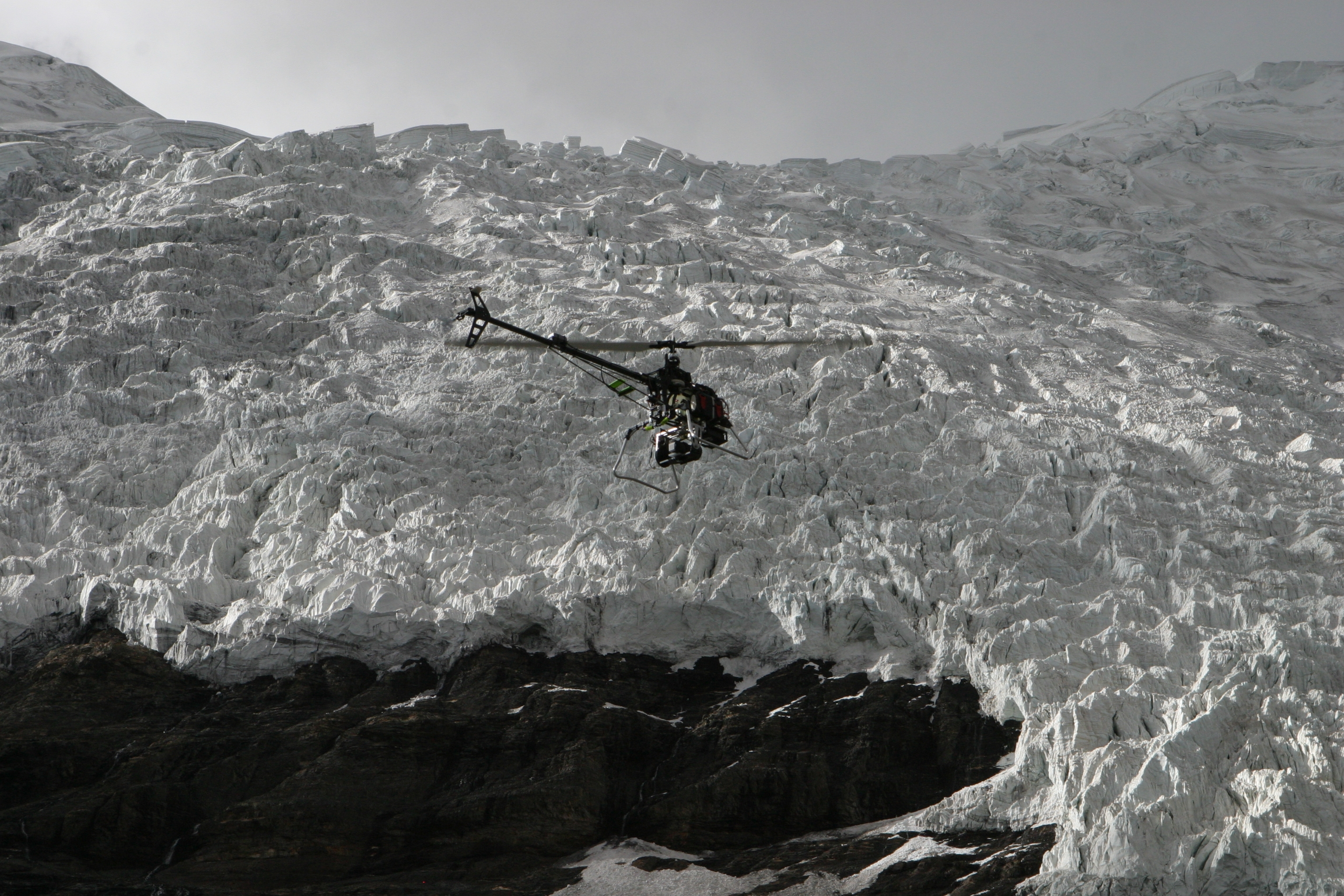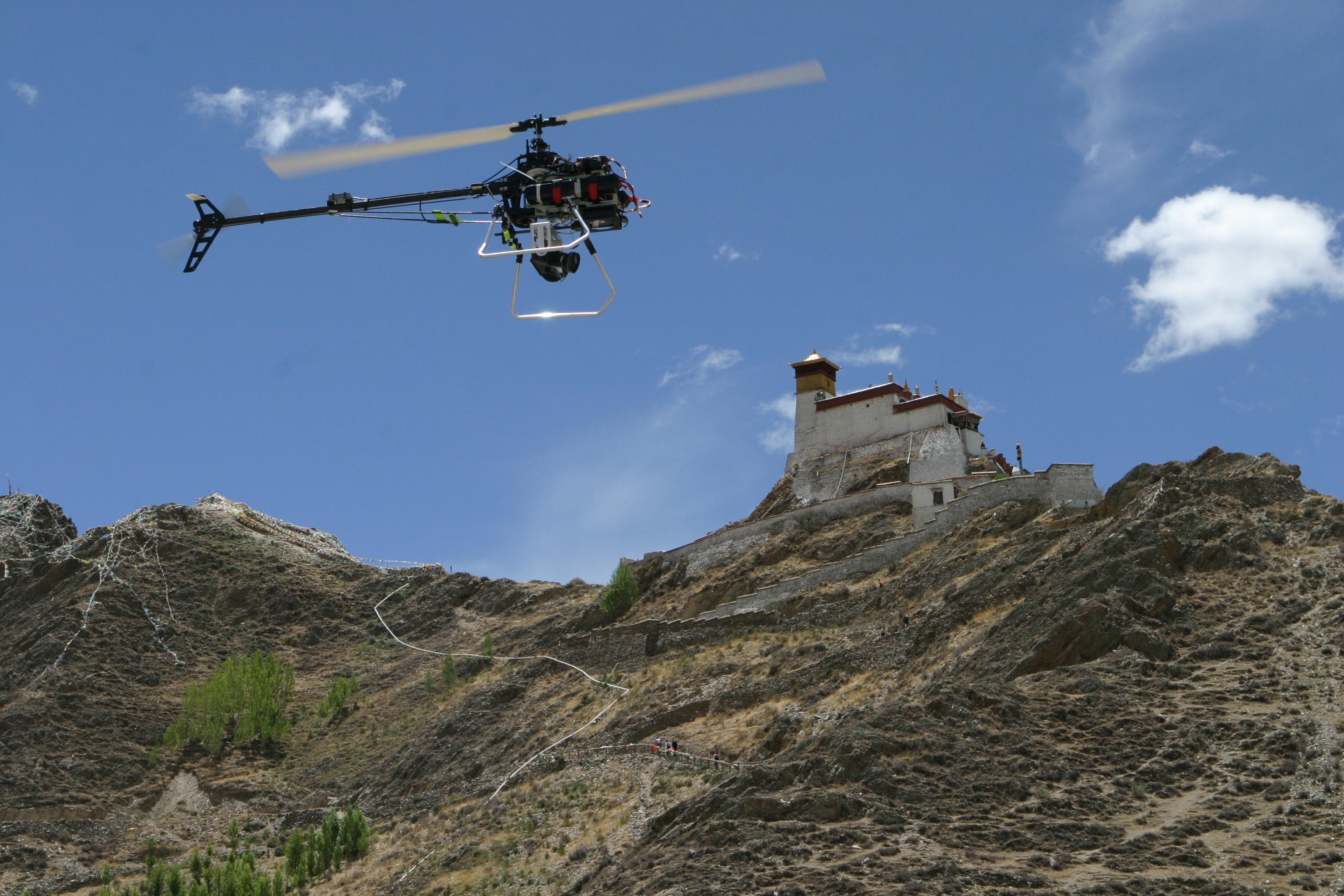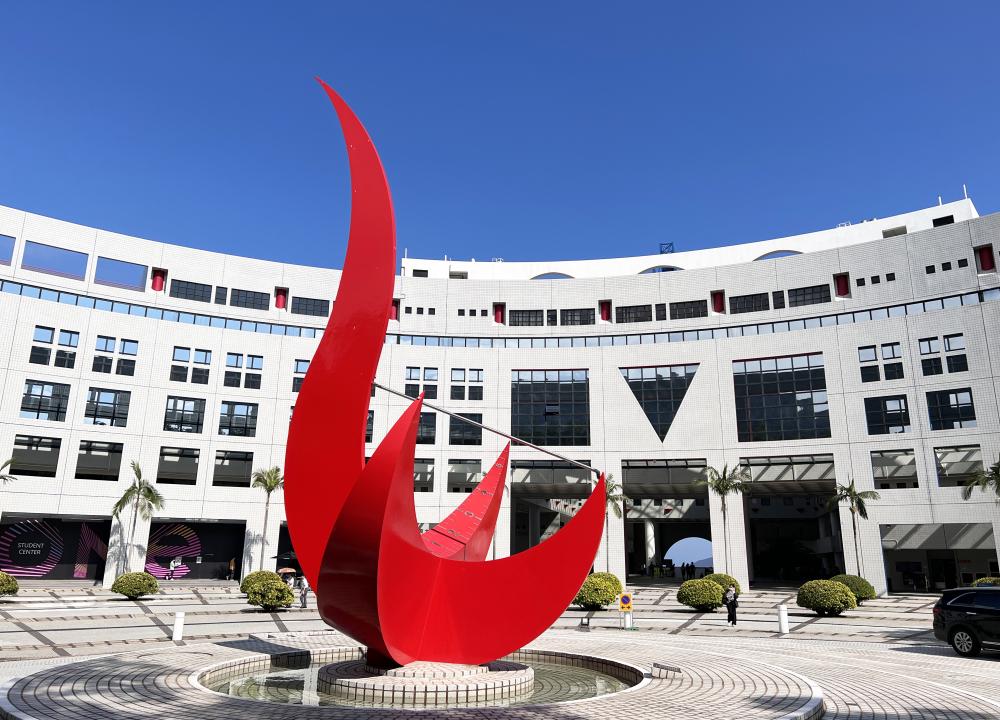HKUST Unmanned Helicopter Makes World's First Autonomous Flight to Mount Everest
An unmanned miniature helicopter developed by The Hong Kong University of Science and Technology (HKUST) has made the world's first autonomous flight to Mount Everest, setting a milestone both in the history of unmanned aviation and in the surveying and protection of high altitude environments.
This was part of a series of test flights carried out over a 10-day period in mid June this year by Prof Zexiang Li of HKUST's Electronic and Computer Engineering Department, assisted by his postgraduate student Mr Frank Wang.
The flights covered various spots in the Tibetan Highland, including Mount Everest, lakes, a glacier, and a maiden forest.
"The biggest challenge of these test flights is the extreme climatic conditions in the high altitudes, particularly the thin air and the exceptionally strong and gusty winds," said Prof Li.
"We believe that the success of these test flights will pave the way for the further use of unmanned helicopters in the surveying and monitoring of high altitude environments, facilitating the protection of highland ecology," Prof Li added.
The helicopter, measuring 2 meters in length and weighing about 10 kilograms, is equipped with the global positioning system (GPS) and on-board inertia measurement units, and is capable of flying on a pre-programmed flight path. During its flight, it can take photographs and videos and send the signals simultaneously to the ground control station. Moreover, it can carry atmospheric data monitoring equipment to perform data collection. When powered by electric battery, it can fly over a radius of 50 km, and if propelled by diesel, its flight route can cover a radius of over 200 km.
The helicopter excels over fixed wing aircraft in that it does not require a runway to take off or land, and can also remain stationary in the air in order to take pictures or videos, or to perform surveillance duties.
The HKUST team is one of the top research teams on unmanned helicopters in China. It was also the first team to employ an unmanned helicopter to carry out surveillance and damage assessment in Sichuan immediately after the massive earthquake in May 2008.
"Our team members are proud to be able to use the cutting-edge technology developed at HKUST to the benefit of China and the world. This technology has a wide range of current and potential applications, and readily lends itself to commercialization," said Prof Li.
For media enquiries, please feel free to contact :
Ross Lai
Tel: 2358 6306 / 9103 2928
Email: rosslai@ust.hk
Donna Wong
Tel: 2358 6317
Email: donnaw@ust.hk









